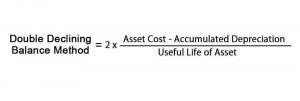
A listing of the accounts available in the accounting system in which to record entries. The chart of accounts consists of balance sheet accounts (assets, liabilities, stockholders’ equity) and income statement accounts (revenues, expenses, gains, losses). The chart of accounts can be expanded and tailored to reflect the operations of the company. This financial statement reports the amounts of assets, liabilities, and net assets as of a specified date. Part of building trust with the community, donors, board of governors, and other stakeholders is to statement of functional expenses be transparent in how the nonprofit organization’s expenses drive support for its missions and programs.

Overview of Financial Statements in Nonprofits
- Common expenses that appear as a fundraising expense include the postage for appeals and letters, acknowledgment letter creation, and the wages paid to the development director.
- Most nonprofit organizations that have more than one program find the SFE the most effective method of recording expenses.
- Using detailed a chart of accounts, maintaining organized records, and regularly reviewing and reconciling accounts can also help prevent this mistake.
- Therefore, nonprofits must maintain a reasonable ratio between program service expenses and management and general expenses.
- Direct allocation is used when expenses are attributable to a specific category.
- To help you do this, we’ve created this complete guide to functional expenses for nonprofits and other nonprofit bookkeeping and accounting resources.
- At any point in time, a stakeholder can ask for transparency and accessibility to a nonprofit’s financials.
For ledger account example, a small organization that doesn’t have departments and whose employees perform a variety of functions probably wouldn’t want to use a headcount method to allocate functional expenses. Aside from accounting regulations that require a SOFE in some form, it’s a useful tool for the organization to visualize how their resources are being used. As mentioned previously, most of an organization’s expenses should be devoted to its programs, since those are what will help the organization work towards its mission.

A Real-Life Example of a Nonprofit’s Statement of Functional Expenses
- The detail in the general ledger accounts will always be available for management’s use.
- But non-profits need to classify their expenses according to both nature and function.
- It allows stakeholders to see at a glance how much of the nonprofit’s resources are being directed toward mission-critical programs versus administrative and fundraising efforts.
- As nonprofits continue to face increasing scrutiny regarding financial stewardship, adopting tools like Expensify becomes essential for demonstrating responsible and effective use of resources in pursuit of their mission.
For example, depending on how much of the office space is used by the fundraising department, the organization can see how much of its rent expenses should be allocated toward the fundraising department. Because the money that comes from nonprofit businesses is the result of grants, fundraisers, donations, and campaigns, not-for-profit organizations must report their expenses differently than a for-profit business would. A more extensive estimation process is required for expenses that cannot be tied back to a specific Law Firm Accounts Receivable Management program or support service (e.g., payroll costs, depreciation, occupancy, and repairs and maintenance). The most common benchmarks to allocate these expenses are time and effort for payroll costs and square footage for occupancy costs. The easiest way to start an allocation is by first identifying expenses incurred for a specific program or support service — they’ll be allocated directly. For instance, a food bank that incurs costs to transport food items will allocate the total transportation amount to program services.
Nonprofit Accounting

Although these expenses are essential for the efficient operation of the organization, they do not directly contribute to program services, hence they are categorized separately to ensure clarity and transparency. The statement of functional expenses tracks costs by classifying them into mission-based programs and support services, including administration and fundraising. In other words, it’s like a financial map that shows how an organization is spending its money. Analyzing each nonprofit financial statement provides unique insights into your organization’s financial situation and allows you to make data-driven decisions about how to manage funding. As we alluded to in the previous section, a major area of decision-making that the statement of functional expenses informs is the creation of your nonprofit’s annual operating budget. By comparing the report with your predictions from the previous year, you can make more accurate projections when allocating expenses for the coming year.

In this setup, there really should be two “Consulting Expense” accounts – one in both the Management and Program expenses. A bookkeeper then needs to be very careful to enter expenses into the correct account to maintain consistency. We are now ready to present examples of the statement of financial position and the statement of activities. To do that, we’ll follow the activities of a nonprofit organization called Home4U, a daytime shelter for adults. Program expenses (or program services expenses) are the amounts directly incurred by the nonprofit in carrying out its programs.
